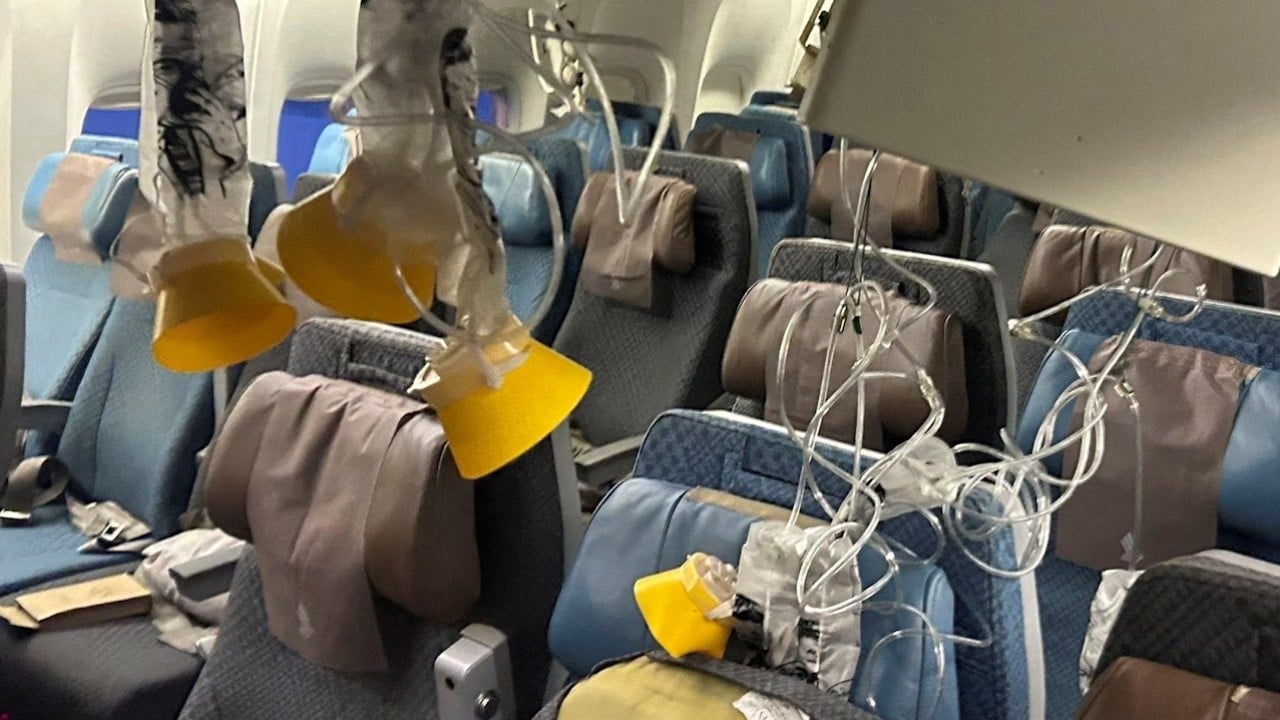
Boeing mishaps, Singapore Airlines turbulence spark flight safety jitters
- US Google searches for aviation safety have hit the highest level in a decade following a string of headline-grabbing airline accidents this year
- American regulator the FAA sought to calm fliers’ nerves, saying ‘aviation is the safest way to travel and that’s because we never take anything for granted’
A spate of high-profile airline accidents this year have left a lasting impression on the public.
The reality, statistics show, remains that getting on a Boeing or Airbus SE jetliner is still exponentially safer than the drive to the airport. Last year, there wasn’t a single fatality among the 37 million commercial airline flights.
While 2024 won’t match that record, it’s been an average year in terms of airline safety. Yet public perception remains jittery. US web searches for “flight safety” hit the highest level in March since October 2014, according to Google Trends.
Five people aboard a Japan coastguard turboprop lost their lives in early January when the plane ventured onto the runway path of an incoming Airbus A350. While nobody died in the January 5 structural failure of a 737 Max 9 operated by Alaska Air Group Inc., the accident dealt a serious blow to Boeing’s credibility and to passenger confidence.
On the flight from London to Singapore this week, a 73-year-old British man died from a suspected heart attack after the plane encountered severe turbulence.
“There is reason for the public to be concerned but I think the concern is elevated because of the real focus that some news stations have given,” said John Goglia, an aviation safety expert and former member of the National Transportation Safety Board. “The wheel falling off the aeroplane never would have gone anywhere; in some local newspapers it may have been a one-inch column.”
Indeed, government statistics indicate the US is having a fairly normal year.
In the US, there were 11 accidents and incidents on commercial passenger or cargo flights in the first quarter, according to the NTSB database. That’s slightly above an average of 9.7 in the decade from 2010 to 2019. Serious cases stood at four in the quarter, slightly above the pre-Covid average of 3.3. The figures are based on cases the NTSB investigates, which include all accidents and only some incidents, so the numbers can vary.
Meanwhile, the Federal Aviation Administration reported progress in one problem area. The rate of serious runway incursions in the first quarter decreased by 59 per cent from the same period in 2023, a historically high year for such events. The current rate for 2024 is below the annual average of 0.31 per 1 million aircraft operations over the last decade, according to data provided to Bloomberg.
“Aviation is the safest way to travel and that’s because we never take anything for granted,” said the FAA, which is responsible for airline safety in the US. “We are always looking for risk and ways to mitigate it.”
The extended spotlight on Boeing has brought significant attention to the planemaker, with some fliers filtering out its 737 Max jets. Yet many of the incidents have occurred with older planes, and are more likely to be traced back to an airline maintenance or operational issue than the original design or build quality.
“In this environment, any operational event no matter how routine can get outsize attention,” Boeing CEO Dave Calhoun said at the company’s May 17 annual meeting.
Many of the events which have worried fliers this year, from landing gear collapsing to pilots overshooting runways, are classified as incidents rather than the more serious “accident,” which the International Civil Aviation Organisation defines as involving a person being fatally or seriously injured, the aircraft sustaining damage requiring repairs or the aircraft going missing.
That doesn’t mean there aren’t improvements to be made, according to Loren Groff, the chief data scientist at the NTSB. He pointed to the work being done to improve staffing and training for air traffic controllers after some recent errors and near-collisions on runways.
“Overall, it’s amazing that the US aviation system, and most of the world in general, can do something so complex so successfully,” Groff said. “Would I be afraid of aviation in any way? No, absolutely not.”


